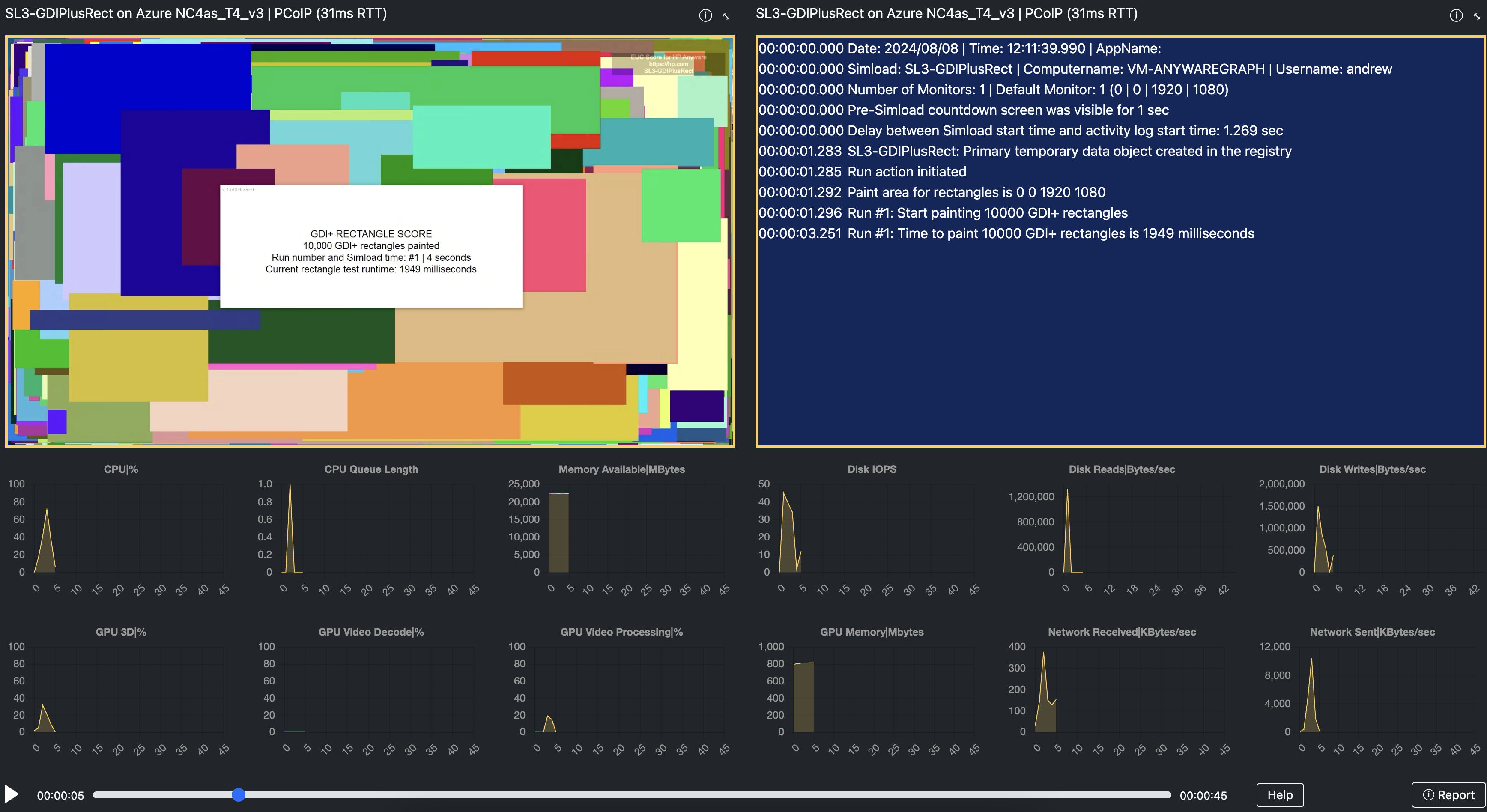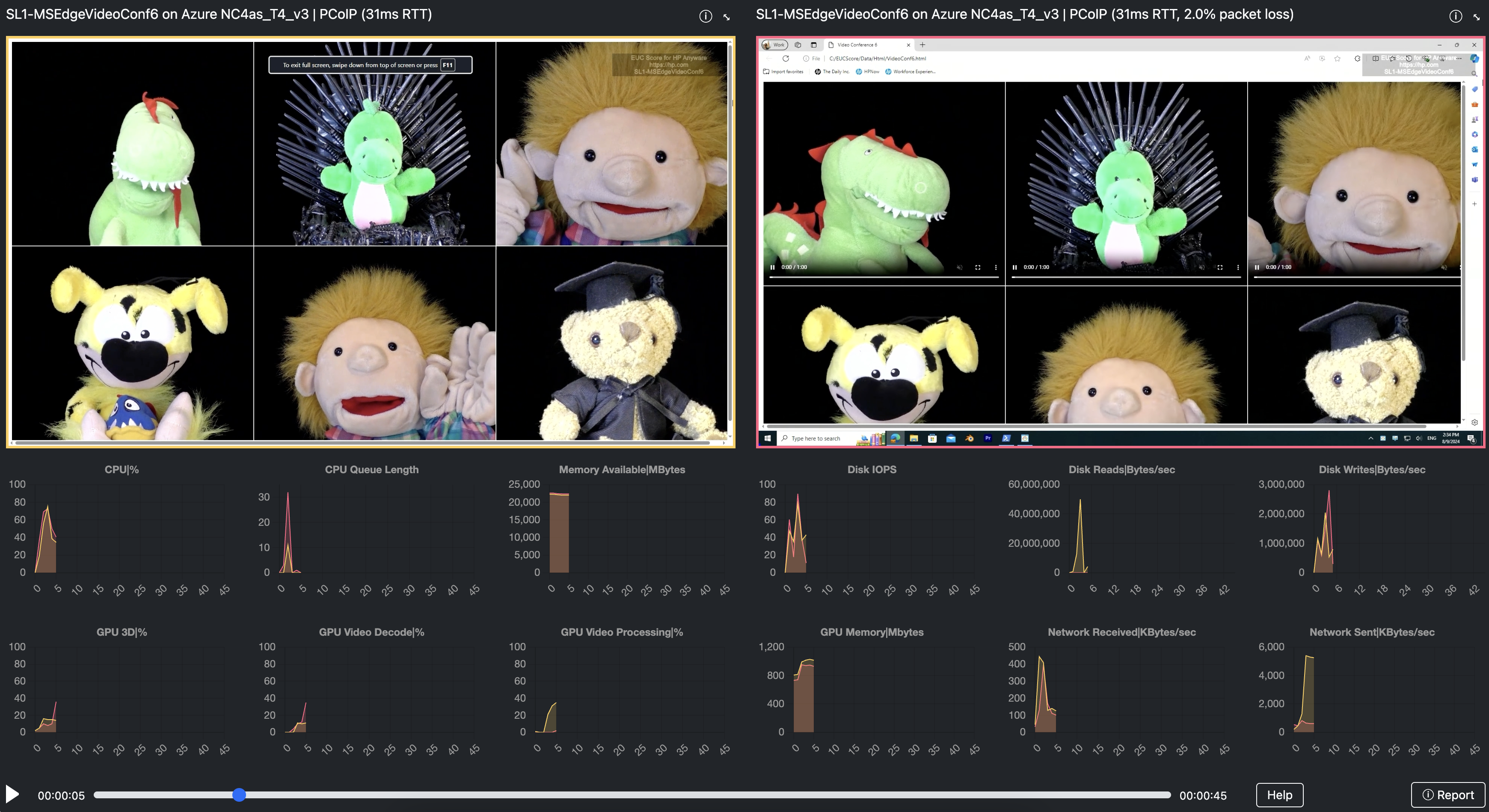Table of Contents
Is PCoIP an interesting remoting protocol and what are the use cases where it works well and where it does not? In this benchmarking research, the performance of the HP Anyware PCoIP (PC-over-IP) solution is evaluated. This technology is designed to deliver high-quality remote desktop experiences. The focus of the evaluation is on assessing its efficiency and overall user experience when deployed on an NVIDIA T4-enabled Azure VM, under various network conditions. By conducting a series of rigorous tests, a comprehensive analysis is provided on how well HP Anyware PCoIP meets the demands of modern remote work environments, ensuring seamless and responsive access to virtual desktops and applications.
About HP Anyware PCoIP
In October 2021, HP acquired Teradici and renamed its remote desktop solution and the remoting protocol to HP Anyware PCoIP. Similar to Microsoft RDP, Citrix HDX, Omnissa Blast or the Frame Remoting Protocol, PCoIP is a high-performance remote display protocol developed to deliver a seamless and secure remote desktop experience. The protocol uses lossless compression which is used when there is minimal network congestion.
PCoIP is optimized for high-resolution graphics and multimedia, making it suitable for demanding applications such as CAD, video editing, and 3D modeling. PCoIP leverages hardware acceleration on both the client and server sides to enhance performance, particularly for graphics-intensive applications. PCoIP is compatible with cloud-based virtual machines, such as those provided by Azure and AWS, allowing organizations to leverage cloud resources for their remote desktop needs.
Methodology and Setup
The EUC Score test methodology used in this benchmarking test is designed to measure and quantify the perceived end-user experience in remote application and digital workspace environments. Its key components are simulated workloads (“Simloads”), telemetry data collection, screen video capture, and synchronized data visualization and analysis. The test methodology emphasizes repeatability and precision, ensuring that the tests can be consistently reproduced and the results are reliable. To thoroughly evaluate the HP Anyware PCoIP solution, a set of EUC Score Simloads simulating real-world usage scenarios was selected, referred to as an EUC Score test sequence.
The Azure NC4asT4_v3 VM running Windows 11 used throughout this benchmarking test was hosted in the Azure North Europe datacenter (Dublin, Ireland). This Azure VM type is one of Azure’s GPU-optimized VM instances. It features four AMD EPYC 7V12 vCPUs @ 2.45GHz, 28GB RAM, 500GB Storage and a full NVIDIA Tesla T4 GPU with 16GB of frame buffer. Installed components relevant for this test were EUC Score Enterprise 24.07, PCoIP Graphics Agent 24.03.4, and HP Anyware Manager Monitor 24.07.0.0. Across all EUC Score test sequences, the PCoIP out-of-box policy settings were maintained, except for a change in the mouse and keyboard settings in the desktop policy to allow synthetic user interaction.
The endpoint device was an Intel NUC 8i7HNK with Windows 11 and the Anyware PCoIP Client 24.7.3 connected to the Azure NC4asT4_v3 VM from the EUC Score test lab in the Frankfurt metropolitan area, Germany. The round-trip time (RTT) of this connection was 31 milliseconds as long as the WAN emulator was configured in such a way that it didn’t add network constraints.
As part of this benchmarking test, multiple EUC Score sequences were performed under various network conditions, including the unconstrained high-bandwidth, low-latency scenario (100 Mbps, 31 milliseconds RTT), as well as more challenging scenarios with limited bandwidth, higher latency, and a noticeable packet loss rate. The responsiveness and performance of common applications were measured. Additionally, the quality and smoothness of video playback and streaming were evaluated to ensure a seamless multimedia experience.
IMPORTANT NOTE: The benchmarking test was conducted in August and September 2024 with the latest version of the HP Anyware PCoIP remoting solution available at that time. A newer version of PCoIP may show different results.
Hypothesis and Results
PCoIP aims to be the optimal remoting protocol for CAD, video editing and 3D modeling. This should manifest itself in excellent image quality when using graphics-intensive applications in a remote desktop session under network conditions with only minor constraints (100 Mbps, 31 milliseconds of latency). Below are some EUC Score Sync Player clips showing selected test results.
Impressive and very smooth DX9 animation of a rollercoaster ride at 1,000+ fps on the host side. The output image quality is very high, showing little to no compression/decompression artifacts.
Demanding DX11 application showing super-smooth rendering while the synthetic user is using the arrow keys to navigate through the scene. The GPU load is at almost 100%.
Running nine MP4 videos simultaneously. The GPU video decoder is being used to reduce CPU load. The GPU video encoder takes care of the encoding required by the PCoIP protocol.
Very good Cinebench performance and smooth rendering of the output. This demonstrates that this setup is suited for filmmaking, motion design and animation.
Smooth 60 fps output of an OpenGL tesselation animation with 700+ fps rendered in the host frame buffer. The textures in the geometric shapes show a very high quality with little to no compression/decompression artifacts.
Very demanding wireframe animation showing impressive output performance and image quality. On the host side CPU, GPU and outbound network bandwidth are at their limits while rendering up to 1,700 fps to the frame buffer.
Impressive output performance of 10,000 randomly painted GDI+ rectangles.
In the real world, the user experience in a remote desktop session can be affected by constrained network conditions. This is the reason why this benchmarking test evaluates the effects that a non-ideal network has on the user experience of a PCoIP session. There are three different types of network constraints that are considered in this context:
-
Low bandwidth limits the amount of data that can be transmitted over an Internet connection in a given period, measured in megabits per second (Mbps). This benchmarking test includes a Simload sequence with a limited network bandwidth of 8 Mbps.
-
Latency (or round-trip time) measured in milliseconds represents the time delay during data transmission over an Internet connection. High latency can be caused by factors such as the physical distance between devices, network congestion, hardware and software limitations, and the protocol used for data transmission. This benchmarking test includes a Simload sequence with additional 100 milliseconds of round-trip time (50 milliseconds latency in both directions).
-
Packet loss measured in percent describes lost pieces of data traveling through an Internet connection, but failing to reach its destination. Causes for packet loss can be network congestion, outdated hardware or bad wireless connections. This benchmarking test includes a Simload sequence with a packet loss rate of 2%.
Below are side-by-side and color-coded results comparing unconstrained versus constrained network conditions.
Adding 100ms latency (right video, red metrics) shows no difference to the unconstrained network (left video, yellow metrics).
Adding 100ms latency results in stutters (right video, red metrics) compared to the unconstrained network.
Limiting the network bandwidth to 8mbps (right video, red metrics) results in noticeable stutters while maintaining a very good image quality.
Limiting the network bandwidth to 8mbps (right video, red metrics) results in much lower frame rate and stutters while maintaining a very good image quality.
Introducing 2% packet loss (right video, red metrics) results in a very slow frame rate and visible artifacts. But again, the image quality is still very good. The metrics are almost identical on both sides, except for CPU load and network bandwidth, where the latter is caused by the packet loss. The similar metric patterns in yellow and red indicate that the load on the host side is not reduced by the constrained network.
With 2% packet loss and a resulting low network bandwidth (right video, red metrics), the frame rate of the video goes down to approx. 2fps. With 0% packet loss (left video, yellow metrics), all six videos play very smooth at 60fps.
With 2% packet loss (right video, red metrics), the frame rate of the GDI+ score Simload is significantly reduced.
The test results under unconstrained network conditions show that PCoIP provides outstanding perceived user experience. This confirms the assumption that PCoIP is very well suited for applications such as CAD, video editing and 3D modeling when very good network conditions are present.
At higher latency levels, limited network bandwidth and higher packet loss rates, some applications, such as 3D graphics software and media output, showed noticeable performance degradation. At 2% packet loss rate the most significant negative effects are visible, such as visual artifacts and a decrease in responsiveness. A look at the telemetry data shows that a high packet loss rate results in a significantly reduced bandwidth of the “Network Sent” metric, despite the theoretically available bandwidth of 100Mbps.
There are multiple PCoIP policies available that allow performance improvements under constrained network conditions, but these must be applied manually and were not part of this benchmarking test.
Conclusion
This research evaluates the performance of the HP Anyware PCoIP (PC-over-IP) solution under different network conditions when connected to an Azure NC4asT4_v3 VM running Windows 11. In summary, the HP Anyware PCoIP performed exceptionally well under high bandwidth and low latency conditions. Under such unconstrained network conditions, the solution maintained impressive visual quality, ensuring clear and crisp images for both static and dynamic content. This makes HP Anyware PCoIP particularly attractive for CAD/CAM and high-resolution media design use cases in a corporate LAN or over a high-speed connection to a near-by cloud datacenter. It’s needless to say that connecting to the closest cloud datacenter with the highest possible bandwidth is always a best practice, independently of the remoting protocol. And with PCoIP such a setup provides outstanding graphics quality and perceived user experience.
However, the results also show that with the current version of PCoIP at the time of testing, the user experience was not optimal under some constrained network conditions. This is especially true for a high packet loss rate and also to a lesser extent for higher latency and limited bandwidth. But the test results also provided valuable indications of potential improvements. For example, combining auto-detection of network constraints and auto-adaptation of the HP Anyware PCoIP policy settings could be an interesting feature to enhance performance under challenging network conditions.




























